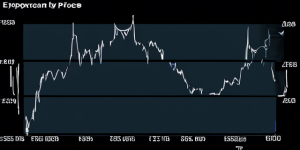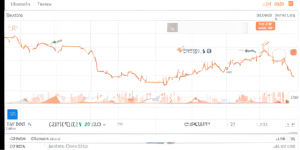
Introduction
In the ever-evolving world of cryptocurrency, having a solid trading strategy is crucial for success. The crypto market is highly volatile, and without a well-defined plan, it’s easy to get caught up in the frenzy and make impulsive decisions that can lead to substantial losses. This comprehensive guide will delve into various cryptocurrency trading strategies, helping you navigate the market with confidence and increase your chances of profitable trades.
Understanding Market Cycles
Before we dive into specific strategies, it’s essential to understand the cyclical nature of the cryptocurrency market. Like any other market, crypto experiences periods of uptrends (bull markets) and downtrends (bear markets). Recognizing these cycles and adapting your strategy accordingly can be the difference between success and failure.
Bull Markets
Bull markets are characterized by a sustained upward trend in prices, driven by increased demand and investor confidence. During these periods, traders often employ strategies that capitalize on the upward momentum, such as:
- Trend Following: Identifying and riding the uptrend by entering long positions and setting trailing stop losses to protect profits.
- Breakout Trading: Watching for price breakouts above key resistance levels and entering long positions as the breakout occurs.
- Momentum Trading: Utilizing technical indicators like the Relative Strength Index (RSI) or Moving Average Convergence Divergence (MACD) to identify and trade with the dominant momentum.
Bear Markets
Bear markets, on the other hand, are characterized by a prolonged downward trend in prices, driven by decreased demand and investor pessimism. During these periods, traders may employ strategies that aim to profit from the downward momentum or seek opportunities to buy assets at discounted prices, such as:
- Short Selling: Borrowing and selling assets with the expectation of buying them back at a lower price to profit from the price decline.
- Scalping: Taking advantage of small price movements by entering and exiting positions quickly, aiming for modest but consistent profits.
- Accumulation: Gradually accumulating assets at lower prices, with the expectation of a future uptrend.
Technical Analysis Strategies

Technical analysis is a crucial tool in a trader’s arsenal, as it helps identify patterns, trends, and potential entry and exit points. Here are some popular technical analysis strategies:
1. Moving Averages
Moving averages are among the most widely used technical indicators in cryptocurrency trading. They help smooth out price fluctuations and provide a visual representation of the overall trend. Traders often use multiple moving averages with different time periods to identify potential buy and sell signals.
- Strategy: Enter a long position when a shorter-term moving average (e.g., 20-period) crosses above a longer-term moving average (e.g., 50-period), indicating a potential uptrend. Conversely, exit or enter a short position when the shorter-term moving average crosses below the longer-term moving average, signaling a potential downtrend.
2. Support and Resistance Levels
Support and resistance levels are key price points where the market has historically shown a tendency to pause or reverse direction. Identifying these levels can provide valuable insights into potential entry and exit points.
- Strategy: Monitor for price movements that approach or break through significant support or resistance levels. Enter long positions when the price breaks above resistance levels, indicating potential upward momentum. Conversely, enter short positions or exit long positions when the price breaks below support levels, signaling potential downward momentum.
3. Chart Patterns
- Strategy: Identify and monitor the formation of chart patterns, and enter positions based on the expected breakout or continuation of the pattern. For example, with a bullish pattern like an ascending triangle, enter a long position when the price breaks above the upper resistance level.
Fundamental Analysis Strategies

While technical analysis focuses on price movements and chart patterns, fundamental analysis examines the underlying factors that drive the value of a cryptocurrency. Here are some fundamental analysis strategies:
1. Project Evaluation
Evaluating the merits of a cryptocurrency project can provide valuable insights into its long-term potential. This includes assessing the team behind the project, the technology, use cases, and adoption rates.
- Strategy: Conduct thorough research on the cryptocurrency project, including its whitepaper, roadmap, and development milestones. Invest in projects with strong fundamentals, innovative technology, and a dedicated community, as these factors can drive long-term value appreciation.
2. Market Sentiment Analysis
Market sentiment refers to the overall attitude and perception of investors towards a particular cryptocurrency or the market as a whole. Monitoring sentiment can help identify potential shifts in market direction.
- Strategy: Analyze various sentiment indicators, such as social media chatter, news coverage, and community engagement. When sentiment is overly bullish, it may signal a potential market top, prompting you to take profits or consider short positions. Conversely, when sentiment is overly bearish, it could present buying opportunities.
3. Regulatory and Adoption Developments
Regulatory changes and mainstream adoption can significantly impact the value and sentiment surrounding a cryptocurrency. Staying informed about these developments can provide valuable insights for trading decisions.
- Strategy: Follow news and developments related to cryptocurrency regulations, institutional adoption, and mainstream integration. Positive regulatory changes or increased adoption by major players can signal potential price appreciation, while negative developments may indicate potential downside risk.
Portfolio Management Strategies

Effective portfolio management is crucial for mitigating risk and maximizing returns in the volatile cryptocurrency market. Here are some portfolio management strategies to consider:
1. Diversification
Diversifying your portfolio across different cryptocurrencies, asset classes, and investment strategies can help reduce overall risk and volatility.
- Strategy: Allocate your capital across a diverse range of cryptocurrencies, including large-cap, mid-cap, and small-cap projects, as well as different sectors (e.g., payments, decentralized finance, gaming). Additionally, consider investing in non-crypto assets like stocks, bonds, or real estate to further diversify your portfolio.
2. Risk Management
Implementing proper risk management techniques is essential for protecting your capital and ensuring long-term success in cryptocurrency trading.
- Strategy: Utilize stop-loss orders to limit potential losses, and consider position sizing strategies like the 2% rule, which limits the risk exposure of any single trade to a small percentage of your overall portfolio. Additionally, implement a well-defined trading plan and stick to it, avoiding impulsive decisions driven by emotions.
3. Dollar-Cost Averaging
Dollar-cost averaging is a strategy that involves investing a fixed amount of capital at regular intervals, regardless of market conditions. This approach can help mitigate the impact of volatility and potentially lower the average cost of your investments over time.
- Strategy: Determine a fixed amount of capital to invest in your chosen cryptocurrencies (e.g., $100 per week or $500 per month), and consistently invest that amount at regular intervals. This strategy can help you avoid the temptation of trying to time the market and can potentially provide better long-term returns.
Automated Trading Strategies
In the fast-paced world of cryptocurrency trading, automated trading strategies can offer several advantages, including increased efficiency, reduced emotional bias, and the ability to execute trades 24/7. Here are some popular automated trading strategies:
1. Algorithmic Trading
Algorithmic trading involves using computer programs to analyze market data and execute trades based on predefined rules and strategies.
- Strategy: Develop and implement trading algorithms that incorporate technical indicators, chart patterns, and other market data to generate buy and sell signals. These algorithms can be backtested and optimized to improve their performance before being deployed in live trading environments.
2. Arbitrage Trading
Arbitrage trading involves exploiting temporary price inefficiencies across different cryptocurrency exchanges or trading pairs.
- Strategy: Utilize automated trading bots to simultaneously monitor prices across multiple exchanges and execute trades to take advantage of price discrepancies. This strategy can be highly profitable, but it requires low latency and efficient execution to capture these fleeting opportunities.
3. High-Frequency Trading (HFT)
High-frequency trading (HFT) is a form of algorithmic trading that involves executing a large number of trades in fractions of a second, capitalizing on small price movements.
- Strategy: Develop and implement high-frequency trading algorithms that can rapidly analyze market data, identify trading opportunities, and execute trades at lightning-fast speeds. HFT requires low-latency infrastructure, advanced risk management, and sophisticated algorithms to be successful.
Conclusion
Cryptocurrency trading offers numerous opportunities for profit, but it also carries significant risks. By understanding market cycles, employing technical and fundamental analysis strategies, practicing effective portfolio management, and exploring automated trading strategies, you can increase your chances of success in this dynamic and ever-evolving market.
FAQs
1. What is the best cryptocurrency trading strategy for beginners?
For beginners, it’s recommended to start with simple strategies like trend following using moving averages or trading based on support and resistance levels. These strategies are relatively straightforward and can help you understand market dynamics before venturing into more complex strategies. Additionally, paper trading (practicing with a demo account) can be invaluable for gaining experience without risking real capital.
2. How much capital is needed to start cryptocurrency trading?
There is no definitive answer, as the required capital depends on your trading strategy, risk tolerance, and financial goals. Some strategies, like scalping or high-frequency trading, may require a larger initial capital to generate meaningful profits. However, many traders start with a modest amount (e.g., $500 to $1,000) and gradually increase their capital as they gain experience and generate profits.
3. Should I focus solely on technical analysis or fundamental analysis?
Both technical and fundamental analysis offer valuable insights and should be used in conjunction for a well-rounded trading approach. Technical analysis can help identify entry and exit points, while fundamental analysis provides a deeper understanding of the long-term potential and value proposition of a cryptocurrency project. Combining these two approaches can lead to more informed trading decisions.
4. Can automated trading strategies replace human traders?
Automated trading strategies can be highly effective and efficient, but they should not be seen as a complete replacement for human traders. While algorithms can execute trades based on predefined rules, they lack the ability to adapt to unforeseen market conditions or incorporate qualitative factors that may influence trading decisions. Human oversight and adjustment of automated strategies are still essential for long-term success.
5. How can I manage risk effectively in cryptocurrency trading?
Effective risk management is crucial in cryptocurrency trading. Some key strategies include:
- Implementing stop-loss orders to limit potential losses
- Practicing proper position sizing (e.g., the 2% rule)
- Diversifying your portfolio across different cryptocurrencies and asset classes
- Maintaining a disciplined trading plan and avoiding impulsive decisions driven by emotions
- Continuously monitoring and adjusting your risk management strategies as market conditions change
Remember, risk management is an ongoing process, and adapting your approach to the ever-changing market dynamics is essential for long-term success.
]]>